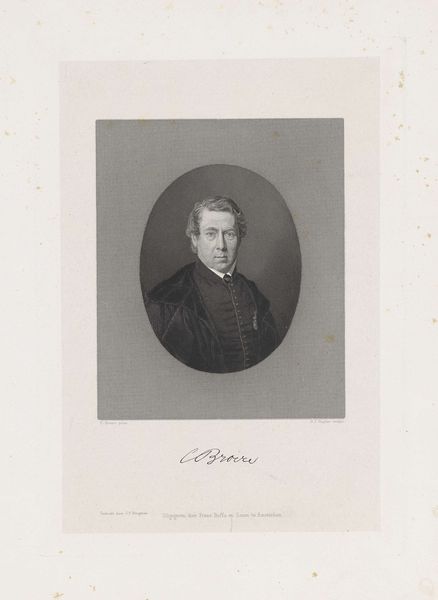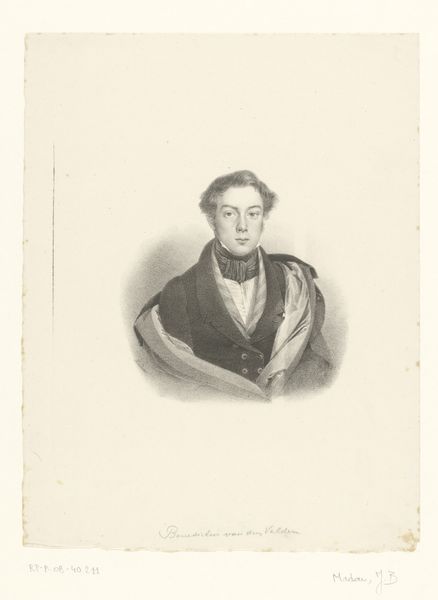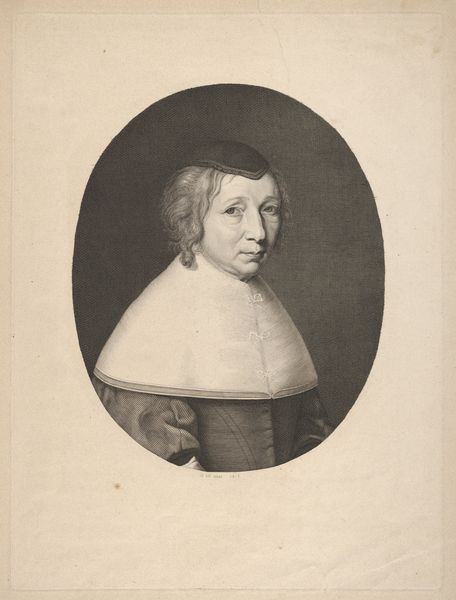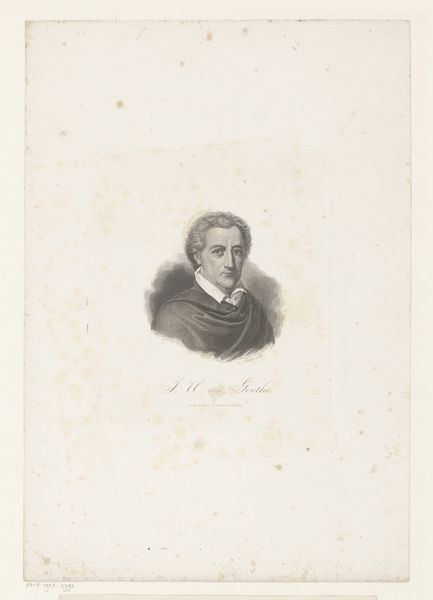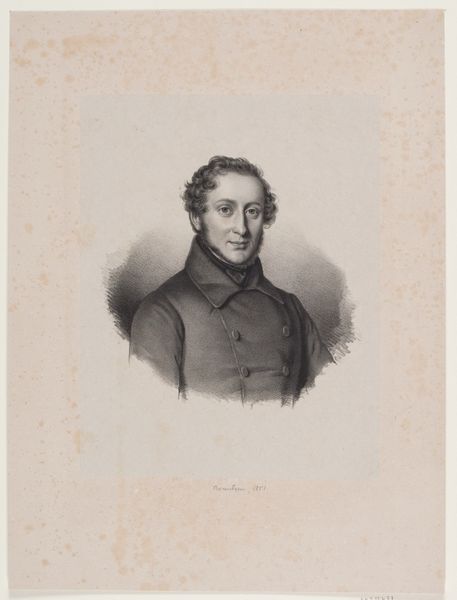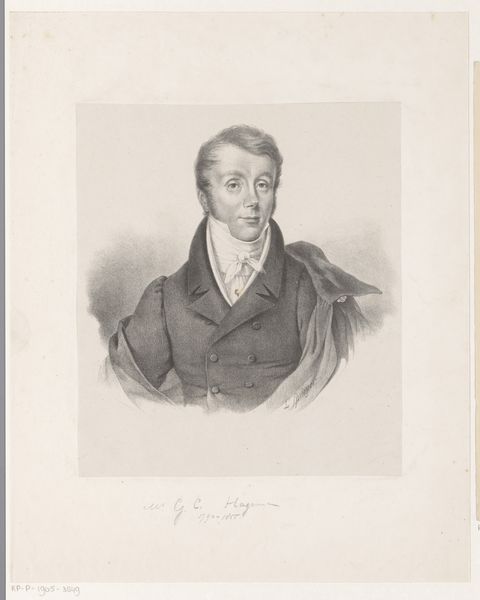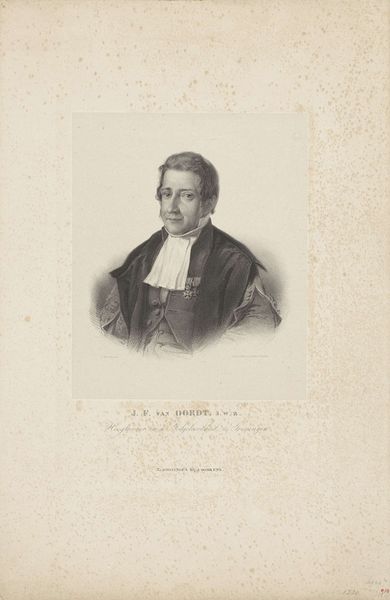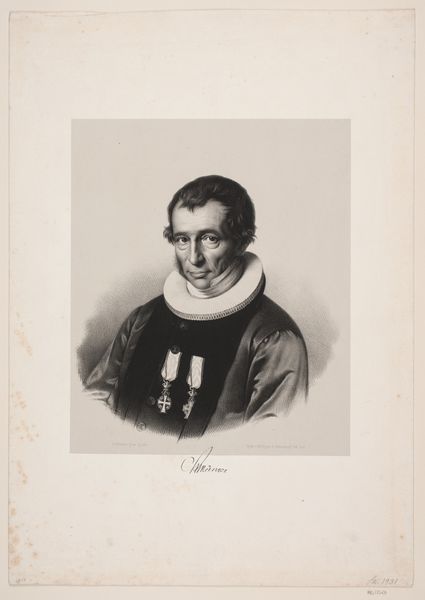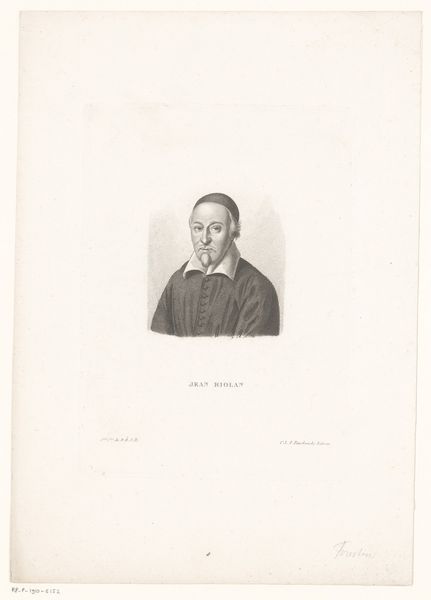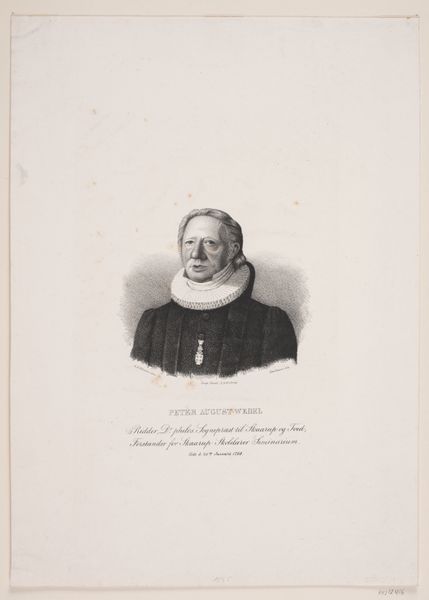
lithograph, print
#
portrait
#
16_19th-century
#
lithograph
# print
#
historical photography
#
academic-art
#
realism
Dimensions: 375 mm (height) x 263 mm (width) (bladmaal)
Curator: Welcome. We're looking at an 1855 lithograph titled "O. N. H. Peders" by August Barlach. It’s a portrait held here at the Statens Museum for Kunst. Editor: My first impression is somber elegance. The high contrast, particularly around the face and ruff collar, draws the eye immediately. The figure exudes a certain reserved confidence. Curator: Absolutely. Portraits like this were crucial for constructing and circulating public images, especially within the emerging middle class in the 19th century. Notice how the print medium made this imagery more accessible. Editor: It’s fascinating to consider lithography’s role in democratizing representation. How did Barlach's choice of materials and the printing process influence the overall aesthetic and perceived status of the sitter? The details in the fabric texture are striking. Curator: The choice of lithography allowed for detailed replication but also aligned with a specific understanding of value. While a painting might signal exclusivity, a well-executed print speaks to wider access and perhaps, a broader sense of civic engagement, and of course patronage. Editor: And what of the labor involved in the creation of this image? From the grinding of the stones to the printing of each impression. This wasn't just the act of the artist but a whole ecosystem of production. Curator: Exactly. Understanding the studio system of Barlach's time, with journeymen and apprentices, helps contextualize the output. The artistic creation was itself an exercise in collaborative labour and distribution. Editor: Considering the materials, the paper, the inks—the physical components themselves bear traces of production and even subsequent handling, age, and conservation that become part of the history of the artwork. The lithographic printing made these portraits less an object and more an artifact of their time. Curator: That's a superb observation. It pushes us to consider how these prints functioned not just as art, but as material objects circulating within complex social and economic networks. The creation and dissemination of this piece also reflects the relationship of art and the political powers that enable its spread to a broader public. Editor: The artist, Barlach, had to work within technical limitations to create that effect with ink on paper, to imbue this figure with so much authority. Each detail conveys something that can only be accessed through a complete historical material analysis. Curator: Looking at "O. N. H. Peders," we’ve uncovered so much more than a mere likeness, right? Editor: Precisely, the layers of socio-political context combined with the inherent properties of material art truly unlock this work's meaning for today’s audiences.
Comments
No comments
Be the first to comment and join the conversation on the ultimate creative platform.
